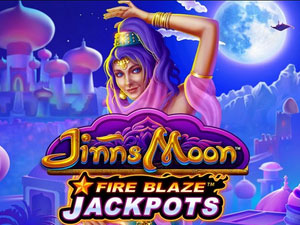De Beers markets its rough diamonds in a series of tightly scripted sales, where handpicked buyers are normally expected to take all their contracted allocations at a price set by De Beers, or face potential penalties in the future. But with prices in free fall around the world, the one-time diamond monopoly has been forced to allow more and more flexibility, finally removing the restrictions altogether.The concessions are the latest in a series of increasingly desperate moves across the industry to stem this year’s plunge in diamond prices, after slowing consumer demand left buyers stuck with swelling inventories. De Beers’s great rival, Russian miner Alrosa PJSC, already canceled all its sales for two months, while the market in India — the dominant cutting and trading center — had self imposed a halt on imports.
At the recent De Beers sale, its buyers, mostly from India and Antwerp, seized on the unusual flexibility, between them buying just $80 million of uncut gems. Normally De Beers would have expected to shift between $400 million and $500 million at such a sale. Outside of the early days of the pandemic — when sales were halted altogether — the one-time monopoly has not sold so few gems since it started making the results public in 2016.The speed and severity of the collapse in diamond prices caught many by surprise.The industry had been one of the great winners of the global pandemic, as stuck-at-home shoppers turned to diamond jewelry and other luxury purchases. But as economies opened up, demand quickly cooled, leaving many in the trade holding too much stock that they’d bought for too much money.What looked like a cool down quickly turned into a plunge. The US economy, by far the industry’s most important market, wobbled under rising inflationary pressure, while key growth market China was hit by a real estate crisis that sapped consumer confidence. To make things worse, the insurgent lab-grown diamond industry started making major gains in a couple of key segments.While there are many different diamond categories, broadly prices for wholesale polished diamonds have tumbled about 20% this year, firing a more dramatic fall in rough — or uncut — stones that have plunged as much as 35%, with the steepest declines happening though late summer and early autumn.The industry’s response was to choke off supply in an almost unprecedented way, which finally seems to be working. Prices at some smaller tender sales and auctions have risen between 5% and 10% in the past week as shortages of some stones start to emerge. With Indian factories set to reopen next month after prolonged Diwali closures, there is now renewed confidence that the worst has passed.“The diamond industry has successfully taken action to stabilize things,” said Anish Aggarwal, a partner at specialist diamond advisory firm Gemdax. “That now creates a window to rebuild confidence.”The plunge in diamond prices has coincided with weakness across the luxury space. LVMH Moet Hennessy Louis Vuitton SE, the luxury titan with 75 labels ranging from Christian Dior to Bulgari, has disappointed investors this year as China’s recovery underwhelmed and demand from US consumers cooled, with the stock shedding more than $100 billion in value since mid April. On Friday, Cartier owner Richemont reported a surprise decline in earnings as revenue from luxury watches unexpectedly fell and high-end consumers reined in spending.Yet there are specific peculiarities to the diamond industry that make it more vulnerable to slowing consumer demand. De Beers sells its gems through 10 sales each year in which the buyers — known as sightholders — generally have to accept the price and the quantities offered.When prices are rising, as they did for much of the past two years, these buyers are often incentivized to speculate, betting that paying for unprofitable stones now will pay off if prices continue to rise. Buyers are also rewarded for making big purchases by being given bigger allotments in the future, known in the industry as “buying for position.”These mechanisms often lead to speculative bubbles, which pop when consumer demand slows and polished diamond inventories build up.In response, Alrosa stopped selling diamonds altogether for two months, while the Indian diamond sector introduced a halt on imports that will run to mid December. De Beers has allowed its customers to refuse all purchases without it having any impact on the future allocations for its last two sales of the year. While the two dominant diamond miners have a long history of curtailing supply or letting buyers refuse some goods when demand weakens, the speed and scale of the combined actions is extremely unusual outside of a major crisis such as the outbreak of the pandemic. While prices have stopped falling — and in some areas rising again — much will depend on the crucial holiday season, which spans from Thanksgiving to Chinese New Year, and how the big miners who have accumulated large stocks of unsold gems feed them back into the market. There also remains uncertainty in the industry about how much of the slowdown is being driven by macro-economic weakness, versus a more worrying shift in consumer choices. Lab-grown diamonds have made rapid progress in some key segments of the market, while there are lingering concerns in the industry about whether Gen Z consumers look at diamonds the same way as previous generations do.“We expect there to be some cyclical recovery in the diamond markets,” said Christopher LaFemina, an analyst at Jefferies. “But we believe there are also structural issues here that could lead to weaker than expected demand for the longer term.”
